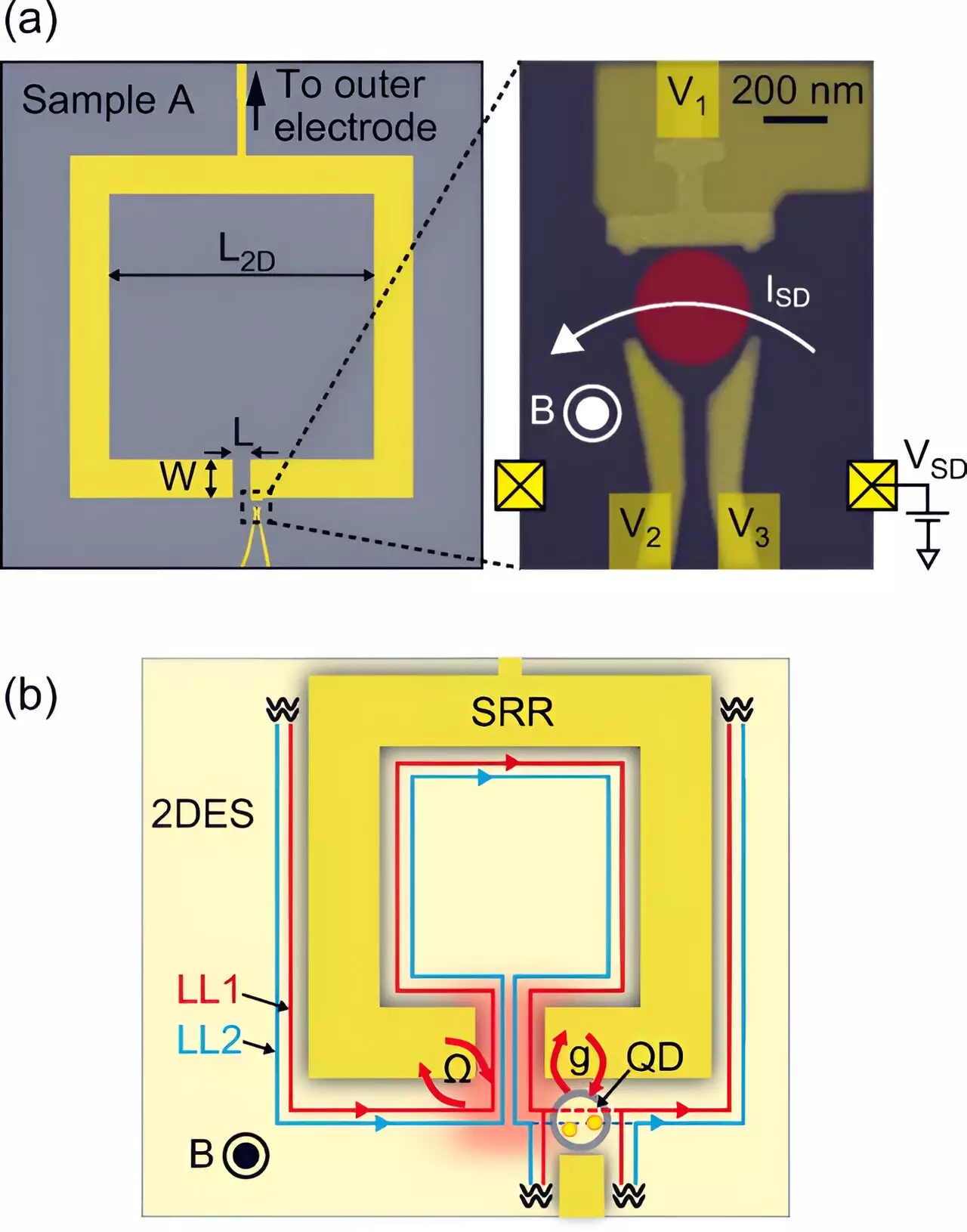Future quantum electronics will revolutionize the world of technology, offering unprecedented capabilities beyond conventional electronics. Quantum electronics store information in qubits, which have the unique ability to take on multiple forms. However, the challenges of transmitting quantum information beyond a single qubit have hindered the progress of qubit design. In a recent study published in Physical Review Letters, researchers from the Institute of Industrial Science at the University of Tokyo have developed a groundbreaking technology for transmitting quantum information over greater distances, potentially enhancing the functionality of future quantum electronics.
The key challenge in quantum electronics lies in transmitting quantum information from one quantum dot to another on the same quantum computer chip. In order to achieve this, researchers have explored the possibility of converting matter information, specifically electron information, into light information by generating light-matter hybrid states. Previous attempts at high-speed quantum information transmission were limited by their incompatibility with the one-electron requirements of quantum information processing. The research team aimed to overcome this limitation by developing a method that is more flexible in design and compatible with current semiconductor fabrication tools.
In their study, the researchers coupled a few electrons in a quantum dot to an electrical circuit called a terahertz split-ring resonator. This coupling design is simple and allows for large-scale integration, making it ideal for practical implementation. Unlike previous methods that involved coupling the resonator with an ensemble of thousands to tens of thousands of electrons, the present system confines only a few electrons, which is more suitable for quantum information processing. Despite the small number of electrons, the coupling strength is comparable to that of many-electron systems due to the confinement of both electrons and terahertz electromagnetic waves to an ultra-small area.
One of the exciting aspects of this research is the utilization of structures widely employed in advanced nanotechnology, which are commonly integrated into semiconductor manufacturing processes. By leveraging these existing materials and procedures, the research team has addressed a practical quantum information transmission problem. Moreover, the findings hold promise for advancing our understanding of the fundamental physics of light-electron coupled states. The ability to apply these findings in both practical applications and fundamental research contributes to the significance of this work.
This groundbreaking research marks an important step forward in solving a previously challenging problem that has limited the practical applications of laboratory findings in quantum information transmission. The ability to transmit quantum information over greater distances opens up new possibilities for the development of large-scale quantum computers based on semiconductor quantum dots. Thanks to the use of materials and procedures commonly found in semiconductor manufacturing, the practical implementation of this technology is expected to be straightforward.
The future of quantum electronics is rapidly evolving, and advancements in quantum information transmission are crucial for the realization of the full potential of quantum computers. The research conducted by the team from the University of Tokyo represents a significant breakthrough in overcoming the limitations of current qubit designs. By coupling a few electrons in a quantum dot to a terahertz split-ring resonator, the researchers have demonstrated the feasibility of transmitting quantum information over greater distances. The utilization of existing nanotechnology structures further enhances the practicality and applicability of this research. As we continue to push the boundaries of quantum technology, the findings of this study pave the way for future advancements in quantum electronics and the realization of large-scale quantum computers.


Leave a Reply